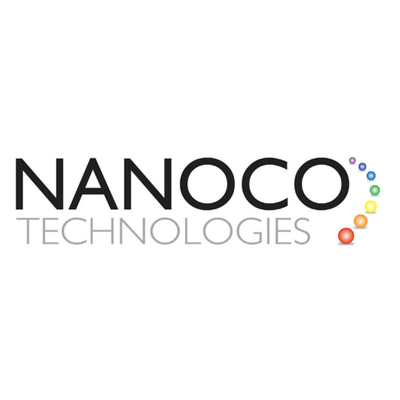Over 30 years ago, when Alexei Ekimov, Louis Brus, and Moungi Bawendi began their work on quantum dots, they could not have predicted the profound influence these tiny crystals would exert on the world. Their contributions, alongside the efforts of others, sparked the emergence of nanoscience and nanotechnology. Today, quantum dots are employed in various applications, ranging from QLED television displays to medical imaging. However, these applications merely hint at the future potential of these fascinating materials.
As Euan Kay, an organic chemist at the University of St Andrews in the UK, reflects, “It was a fundamental scientific development that has genuinely led to commercial products and much excitement about what could come in the future.” Jill Millstone, an inorganic and materials chemist at the University of Pittsburgh, US, adds, “They really did something creative and unique; the field is huge and feels infinite in its possibility.”
In recognition of their groundbreaking work, Ekimov, Brus, and Bawendi were awarded the Nobel Prize in Chemistry on 4 October 2023 for their discovery and synthesis of quantum dots. Despite this acclaim, their journey was not without challenges. Decades passed before quantum dots could be used effectively in both laboratories and commercial devices.
Quantum dots, named in 1986 by physicist Mark Reed, are nanometre-sized crystals with semiconducting properties. These crystals, typically composed of transition metals and non-metal or metalloid elements, such as cadmium selenide and cadmium telluride, exhibit quantum confinement effects. This phenomenon occurs due to their incredibly small size, typically ranging from 2 to 10 nanometres in diameter. Their fluorescence can be altered by adjusting their size, allowing for tunability in their colour emission. The smallest dots, for instance, emit blue light with shorter wavelengths, while larger ones emit red light with longer wavelengths.
The theory of quantum confinement was initially proposed in the 1930s by physicist Herbert Fröhlich, who suggested that the properties of materials could depend on the dimensions of small particles. Despite decades of research into quantum size effects, practical applications remained elusive until the 1970s when researchers successfully created nanostructures. However, these early efforts only produced structures atop bulk materials, which did not yet represent independent materials.
In 1979, Ekimov, working at the Vavilov State Optical Institute in Soviet Russia, began experimenting with semiconductor-activated glasses. His aim was to explain the colour variations in these materials, a technology that had existed since medieval times for producing stained glass. Through these experiments, Ekimov and his colleague Alexander Efros discovered that the size of colloidal particles within glass affected light absorption. Smaller particles absorbed blue light, while larger ones behaved more like bulk copper chloride. This size-dependent effect was the first successful demonstration of quantum dots, though they were ‘frozen’ within glass and not easily utilised.
Around the same time, Brus, working at Bell Laboratories in New Jersey, USA, was investigating organic photochemistry. While studying cadmium sulfide particles, he inadvertently observed quantum size effects. Brus noticed that the optical properties of cadmium sulfide changed over time as the particles grew. He attributed this phenomenon to quantum size effects and shifted his research focus to study these “little particles.”
Despite being separated by the Iron Curtain, Brus eventually learned of Ekimov and Efros’ work through translated papers. This discovery led to correspondence between Brus and the Soviet researchers, although it took several years for them to meet in person. Their eventual collaboration played a pivotal role in advancing the understanding of quantum dots.
Despite the early success of Ekimov and Brus, producing quantum dots with consistent quality remained a challenge. The synthesis methods at the time were unpredictable, often resulting in defects. A solution was needed to ensure reliable production, and it came in the form of a collaborative effort involving Brus, his colleagues, and later, Bawendi.
Bawendi, who had a background in theoretical physics, joined Bell Labs as a postdoc in 1988. Working alongside Brus and other scientists, he began experimenting with different methods to improve the quality of quantum dots. A breakthrough occurred when Bawendi discovered the hot-injection synthesis technique, which involved injecting chemicals into a hot solvent, creating a nucleation event. This method allowed for precise control over the size of quantum dots, resulting in cadmium selenide particles with consistent core structures.
The publication of the hot-injection synthesis method in 1993 revolutionised the field. The technique allowed for the mass production of high-quality quantum dots, enabling their use in a wide range of applications. Over the years, quantum dots have become a cornerstone of nanoscience and are now utilised in numerous commercial products. One of the most notable applications is in television and computer screens, where quantum-dot light-emitting diode (QLED) technology is used to produce vivid colours. Samsung played a significant role in bringing this technology to the market, investing heavily in its development.
Beyond electronics, quantum dots are also used in LED lamps, biomedicine, and diagnostics. In the medical field, their high luminescence and biocompatibility make them ideal for bioimaging, diagnostics, and even drug delivery. Researchers are continually exploring new uses for quantum dots, including in the fields of quantum computing and quantum communication.
Despite the incredible progress made over the past few decades, the full potential of quantum dots is yet to be realised. Their applications continue to expand, with future possibilities including advancements in photovoltaics, photodetectors, and infrared sensing. As Bawendi and his team push the boundaries of quantum optics, the future of quantum dots looks brighter than ever.
The work of Ekimov, Brus, and Bawendi has laid the foundation for an exciting and rapidly evolving field. Their contributions have not only led to groundbreaking commercial applications but also inspired a new generation of scientists to explore the limitless possibilities of quantum materials. The recognition of their achievements with the Nobel Prize underscores the profound impact their discoveries have had on both science and society.
Nanoco Group PLC (LON:NANO) leads the world in the research, development and large-scale manufacture of heavy metal-free nanomaterials for use in displays, lighting, vertical farming, solar energy and bio-imaging.


